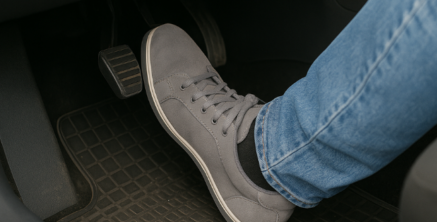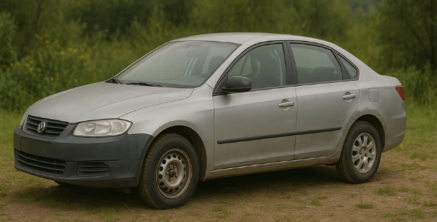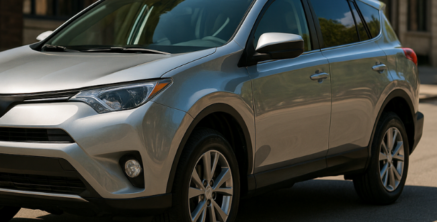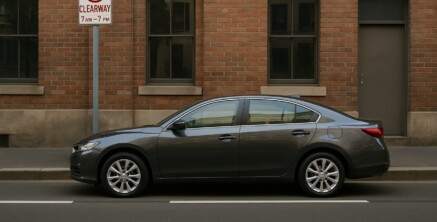
- 1 Understanding Timing Chain vs Timing Belt Systems
- 2 Popular Family Cars with Timing Chains
- 3 Premium and Luxury Vehicles
- 4 Japanese and Korean Manufacturers
- 5 Performance and Sports Cars
- 6 Comprehensive Manufacturer Overview
- 7 Timing Chain Maintenance and Care
- 8 Vehicles to Avoid – Timing Belt Models
- 9 Regional Availability and Market Considerations
- 10 Future Trends and Developments
- 11 Buying Advice and Recommendations
- 12 Key Takeaways
Modern car buyers increasingly seek vehicles equipped with timing chains rather than timing belts due to their superior longevity and reduced maintenance requirements. List of cars with timing chains UK encompasses a wide range of manufacturers and models, from popular family cars to luxury vehicles and sports cars. Understanding which vehicles feature timing chain systems helps potential buyers make informed decisions about long-term ownership costs and maintenance schedules, particularly given the significant expense associated with timing belt replacement intervals.
Understanding Timing Chain vs Timing Belt Systems
The fundamental differences between timing chain and timing belt systems significantly impact vehicle ownership costs and maintenance requirements. Understanding these distinctions helps buyers make informed decisions about long-term vehicle reliability and running costs.
Timing Chain Advantages
Durability and Longevity. Timing chains typically last the entire engine lifetime, often exceeding 150,000-200,000 miles without replacement. This contrasts sharply with timing belts, which require replacement every 40,000-100,000 miles depending on the manufacturer.
Reduced Maintenance Costs. Chain-driven engines eliminate the regular timing belt replacement expense, which can cost £300-£800 depending on vehicle complexity and labour requirements.
Warning Signs Before Failure. Unlike timing belts that can snap suddenly without warning, timing chains usually develop audible rattling noises before complete failure, providing drivers with advance notice of potential issues.
Timing Chain Considerations
Initial Cost Impact. Vehicles with timing chains may have higher purchase prices due to the more complex manufacturing requirements and additional components like chain tensioners and guides.
Engine Noise Characteristics. Chain-driven engines typically produce more mechanical noise than belt-driven equivalents, though modern designs have significantly reduced this difference.
Popular Family Cars with Timing Chains
The family car segment offers numerous options with timing chain systems, ranging from compact hatchbacks to larger saloons and SUVs. These vehicles represent the most cost-effective entry point into chain-driven ownership whilst maintaining practical everyday usability.
Ford Models

Ford Focus (2011-2018)

Ford Fiesta (2008-2017)

Ford Mondeo (2007-2022)
Vauxhall/Opel Range

Vauxhall Astra (2009-2022)

Vauxhall Corsa (2014-2022)
Vauxhall Insignia (2008-2022)
Premium and Luxury Vehicles
The premium vehicle segment has embraced timing chain technology most comprehensively, with German manufacturers leading the adoption across their entire model ranges. These vehicles typically feature more sophisticated chain systems with advanced tensioning and monitoring technology.
German Manufacturers

BMW Models BMW has extensively adopted timing chain systems across their range:
Mercedes-Benz Range

Audi Lineup

Jaguar Land Rover
Jaguar Models

Land Rover Range

Japanese and Korean Manufacturers
Asian manufacturers have increasingly adopted timing chain technology, particularly in their newer engine designs and hybrid powertrains. These brands typically offer excellent reliability and value for money in the chain-driven segment.
Toyota Popular Models

Lexus Range

Popular Honda Models

Hyundai Range

Kia Models

Performance and Sports Cars
Enthusiast-focused vehicles typically feature timing chain systems to handle the increased stress and performance demands of high-output engines. These applications often require more robust chain systems with enhanced tensioning mechanisms.
High-Performance Vehicles
Subaru Models

Mazda Range

Comprehensive Manufacturer Overview
| Manufacturer | Models with Timing Chains | Engine Types | Years |
| BMW | Most models | Petrol/Diesel | 2000+ |
| Mercedes-Benz | Majority of range | Petrol/Diesel | 2005+ |
| Audi | Most modern engines | Petrol/Diesel | 2008+ |
| Ford | EcoBoost/TDCi engines | Petrol/Diesel | 2010+ |
| Vauxhall | Turbo/CDTi variants | Petrol/Diesel | 2009+ |
| Toyota/Lexus | Hybrid/modern engines | Petrol/Hybrid | 2009+ |
| Honda | Recent model years | Petrol | 2012+ |
| Jaguar Land Rover | Ingenium engines | Petrol/Diesel | 2015+ |
Timing Chain Maintenance and Care
Proper maintenance practices are essential for maximising timing chain lifespan and preventing costly repairs. Understanding the key maintenance requirements helps owners protect their investment and maintain optimal engine performance.
Proper maintenance of timing chain systems ensures optimal performance and longevity
Understanding the fundamentals of timing chain operation and maintenance helps owners recognise potential issues before they develop into expensive repairs.
Essential Maintenance Practices:
Warning Signs of Chain Problems
AUTODOC experts point out several symptoms that indicate timing chain issues:
Audible Symptoms:
Performance Indicators:
Vehicles to Avoid – Timing Belt Models
Identifying vehicles that still use timing belt systems helps buyers avoid the ongoing maintenance costs and potential reliability issues associated with belt-driven engines. These models require careful consideration of replacement schedules and associated costs.
Common Models with Timing Belts
Understanding which popular UK models use timing belts helps buyers make informed choices:
Ford Models with Belts:
Vauxhall Belt-Driven Engines:
Other Manufacturers:
Regional Availability and Market Considerations
The UK automotive market shows distinct preferences for timing chain vehicles, influenced by driving patterns, climate conditions, and long-term ownership trends. Understanding these market dynamics helps buyers make strategic purchasing decisions.
UK Market Preferences
According to AUTODOC data, UK buyers increasingly favour timing chain vehicles due to:
Long-term Cost Benefits:
Professional Fleet Applications:
Insurance and Finance Implications
Insurance Considerations:
Finance and Leasing:
Future Trends and Developments
The automotive industry continues to evolve towards more reliable and efficient powertrain technologies, with timing chain adoption representing a significant trend in engine design philosophy. Understanding these developments helps buyers make future-proof purchasing decisions.
Manufacturer Strategies
Industry Movement Towards Chains: Most manufacturers are transitioning away from timing belts in favour of chain systems, driven by consumer demand for reduced maintenance and improved reliability.
Hybrid and Electric Integration: As electrification increases, timing chain systems remain relevant for hybrid powertrains, whilst fully electric vehicles eliminate timing systems entirely.
Technology Improvements
Modern Chain Systems:
Buying Advice and Recommendations
Making informed purchasing decisions requires understanding both the immediate and long-term implications of timing chain versus timing belt systems. Professional evaluation and strategic planning can significantly impact ownership satisfaction and costs.
Pre-Purchase Inspection
When considering a used car with timing chains, AUTODOC professionals recommend checking:
Service History Verification:
Physical Inspection Points:
New Car Purchasing
Model Selection Strategy:
Key Takeaways
Understanding which vehicles feature timing chain systems empowers UK car buyers to make informed decisions that reduce long-term ownership costs whilst improving reliability and reducing maintenance scheduling requirements.








Comment